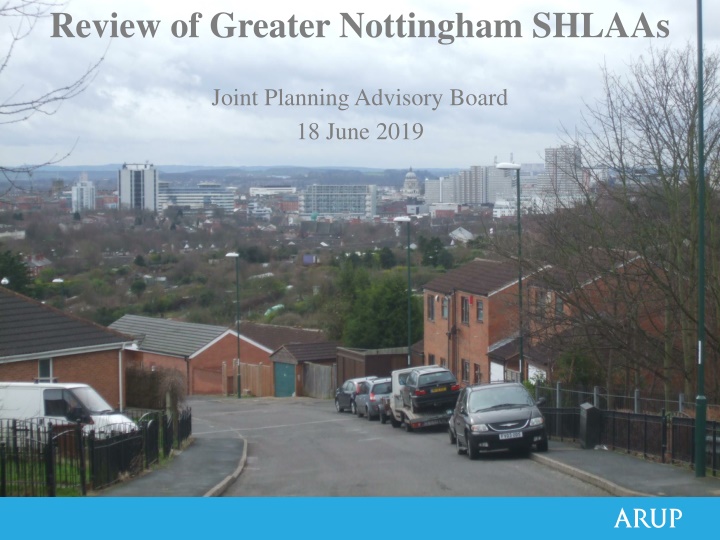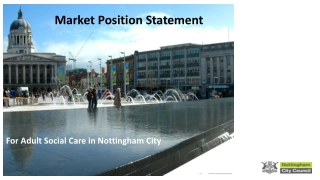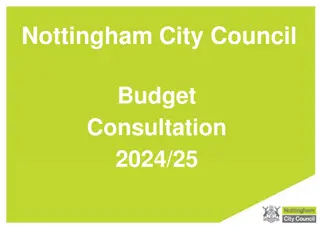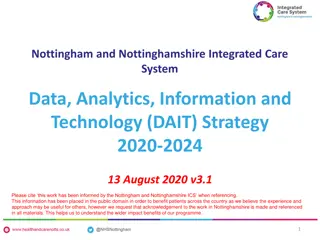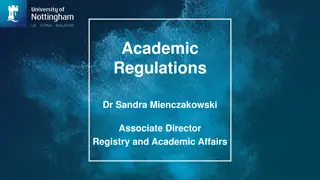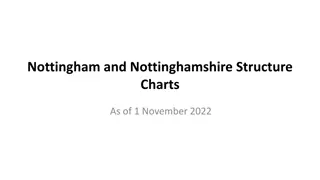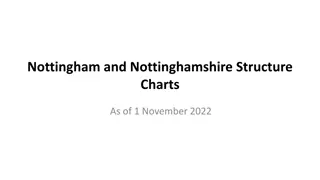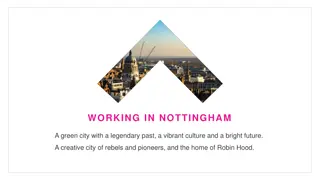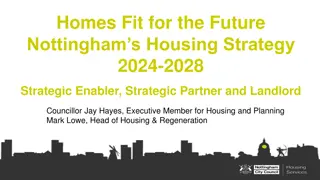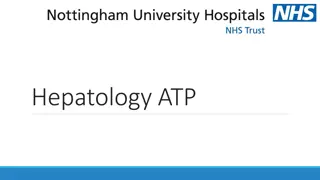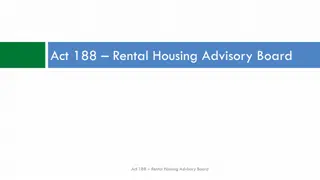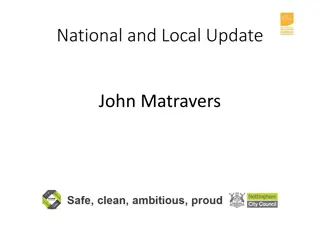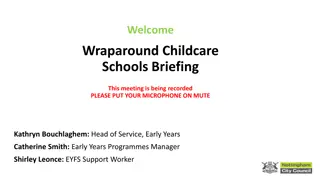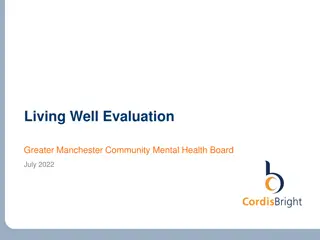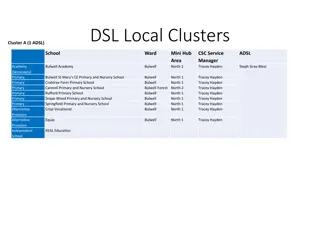Review of Greater Nottingham SHLAAs Advisory Board
Purpose of the review is to ensure robustness and consistency in SHLAA methodologies across Greater Nottingham, with a focus on housing capacity uplifts in the Main Built-Up Area. The review covers Broxtowe, Erewash, Gedling, Nottingham City, and Rushcliffe, emphasizing the importance of local context and the ongoing nature of the process. The SHLAA process is evidence-led to support land development identification under national policy guidelines. Findings indicate generally robust processes with a clear alignment to national guidance, despite some challenges in consistency.
Download Presentation

Please find below an Image/Link to download the presentation.
The content on the website is provided AS IS for your information and personal use only. It may not be sold, licensed, or shared on other websites without obtaining consent from the author.If you encounter any issues during the download, it is possible that the publisher has removed the file from their server.
You are allowed to download the files provided on this website for personal or commercial use, subject to the condition that they are used lawfully. All files are the property of their respective owners.
The content on the website is provided AS IS for your information and personal use only. It may not be sold, licensed, or shared on other websites without obtaining consent from the author.
E N D
Presentation Transcript
Review of Greater Nottingham SHLAAs Joint Planning Advisory Board 18 June 2019
Purpose of the review Stage 1 To review SHLAA methodologies across Greater Nottingham, to ensure robustness and consistency Stage 2 As a result of recommendations from Stage 1, consider what the potential uplifts in housing capacity across the Main Built-Up Area might be 2
Scope of the review Broxtowe, Erewash, Gedling, Nottingham City and Rushcliffe We re a critical friend Our work makes recommendations, but local context is crucial Part of an ongoing process we re doing this at a point in time Not necessarily any right and wrong approaches existing assumptions being made for a good reason But equally, acknowledged need for greater consistency and desire to maximise capacity within the Main Built-Up Area 3
The SHLAA process Evidence-led process to support identification of land for development NPPF paragraph 67 Further detail in Planning Practice Guidance Not just specific sites also other allowances, such as windfall 4
What weve done Reviewed all published documents Considered against our best practice experience Explored processes and consistency further through officer workshop Five authorities provided current housing land supply figures Mindful of timing vs. P2LP examinations 5
Scope of output SHLAA methodology best practice appraisal SHLAA methodology consistency across Greater Nottingham Other allowances (Windfall and Non-implementation) Methodology recommendations Potential updated urban capacity for five authorities 6
Key findings Processes followed are generally robust Clear understanding of the requirements of national policy Broadly, approaches also reflect national guidance Approaches endorsed through examinations (Although this doesn t always help with consistency) 7
Key findings Opportunity to improve consistency by setting out prescribed approaches in public documents Achievability/viability issues not always covered thoroughly Density varies from 20 to 35dph, which may be relatively low Detailed approaches for numbers of developers, ownership, build-out rates and lead in times for some authorities but absent for others Notable variations in windfall assumptions 8
Recommendations The authorities are more similar than they are different some standardisation should be possible, but still need to reflect local circumstances 30 recommendations in total - Approx half cover all authorities, half are specific to individual authorities - Some could inform SHLAAs this year, others will be for the future - Some are about methodology only, some would impact housing capacity across the MBUA 9
Key Recommendations Publish methodologies and approaches wherever appropriate Harmonisation across MBUA of availability, suitability and achievability criteria Adopt consistent typology approach for densities across MBUA but for each authority to apply independently Adopt consistent approaches to developable area across MBUA Closer alignment on windfall (but differing circumstances key) Include garden land when calculating windfall (if evidenced) Consider whether non-implementation deductions are appropriate 10
Key findings Housing land supply Baseline supply of 43,700 dwellings - 37,100 dwellings on known sites, 6,600 dwellings windfall Scenario 1, Closer alignment on windfall 45,500 - 37,100 dwellings on known sites, 8,400 dwellings windfall Scenario 2, Density typologies on unallocated sites 46,000 - 37,600 dwellings on known sites, 8,400 dwellings windfall Hypothetical, and lots of caution needed! 11
Next steps First draft of report circulated to officers Feedback received to be combined with feedback from today Looking to finalise document this week 12
